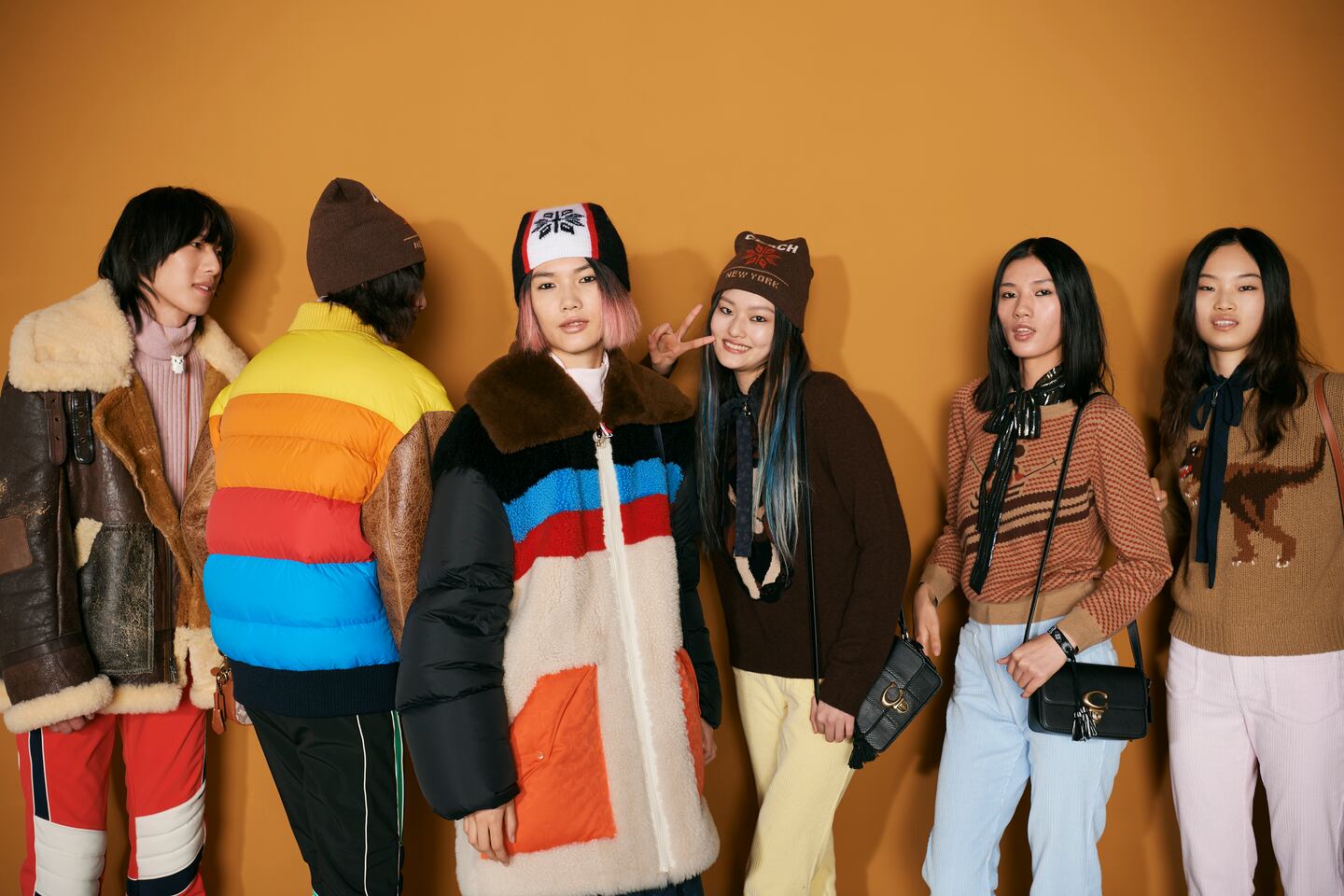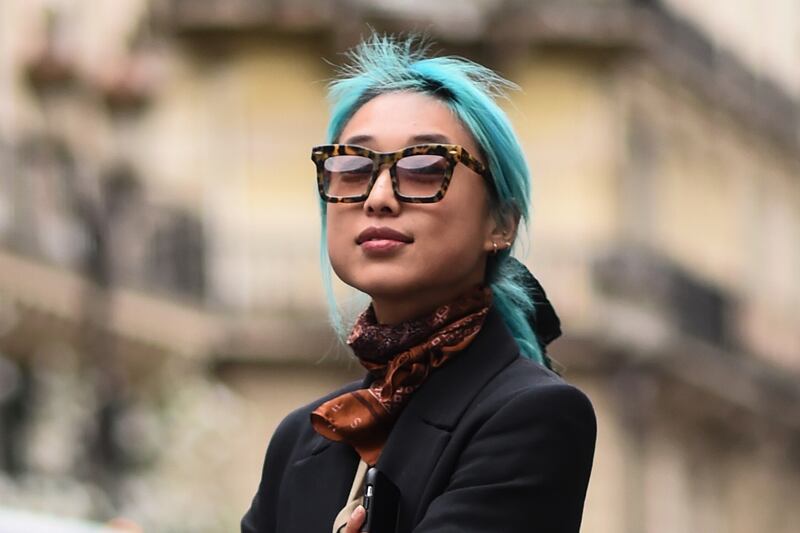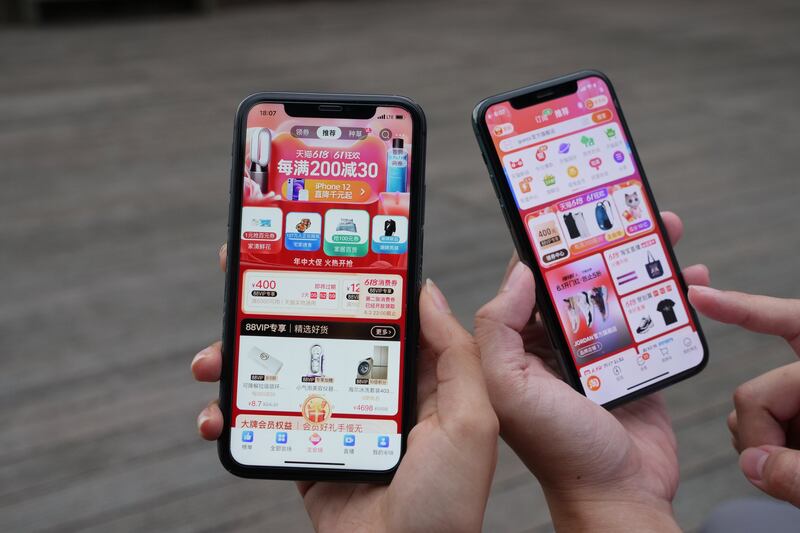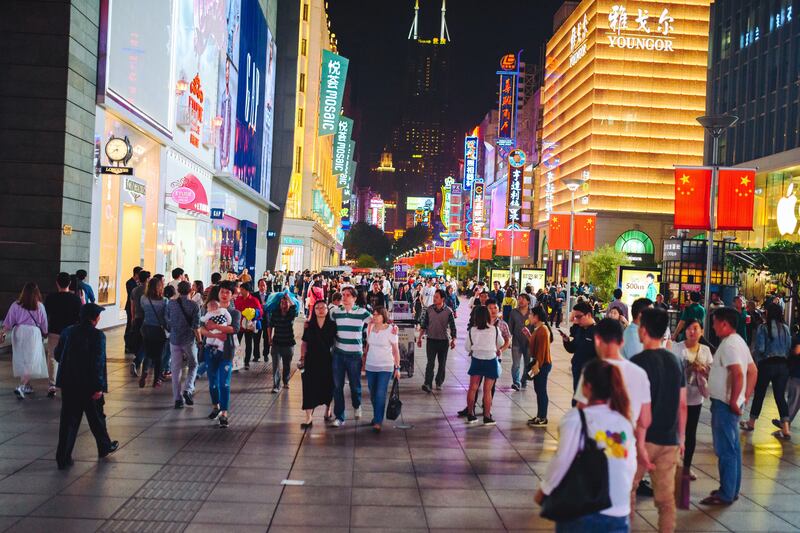
The Business of Fashion
Agenda-setting intelligence, analysis and advice for the global fashion community.

Agenda-setting intelligence, analysis and advice for the global fashion community.

There is a nervous energy in the air among accessible luxury players looking to China as a driver for future growth. Here, too, they are being squeezed by competitors priced both lower and higher than the category’s traditional sweet spot.
But that hasn’t stopped new entrants entering the fray, or incumbents pulling out all the stops to navigate the narrowing path to success in the country’s accessible luxury market.
Just last month, Danish player Ganni, which gained cult status for its Scandi “cool girl” style and attracted investment from LVMH-backed private equity firm L Catterton in 2017, made its direct-to-consumer debut in China through Tmall.
The brand, which has had wholesale distribution in the country for years, also launched on Chinese social media platforms Weibo, WeChat and Xiaohongshu. Ganni’s creative director, Ditte Reffstrup, said it was in response to the “massive amount of love and support [we’ve seen] over the years from our Chinese Ganni girls.” That may be the case, but the pandemic also exposed brands that were late to develop their digital presence in China.
ADVERTISEMENT
Another brand known for bringing elements of the luxury experience into a more affordable price bracket recently made some noise. Coach staged a major catwalk show in Shanghai last month, featuring a drive-in movie theatre built into the historic Shanghai Exhibition Centre, with celebrities sitting in vintage cars while models stalked around them wearing the brand’s Winter 2021 collection.
Coach, of course, is no stranger to the Chinese market, having entered in 1998 through distributors. It’s no stranger to Tmall either, having joined, left and re-joined the platform several times over the years, as its e-commerce strategy evolved to keep pace with China’s dramatically changing ecosystem.
Though Ganni and Coach come from different places and have varied experiences in China, both now find themselves fighting with a host of other brands for a splintering segment of the accessible luxury market. But at a time when consumers’ priorities are rapidly changing, not every investment will pay off.
A Golden Opportunity Losing Some of its Lustre
There was a brief moment, in the early 2010s, when selling accessible luxury to Chinese consumers seemed almost easy. As hundreds of millions of people rose into the ranks of the middle class, consumers started their trading-up journey with mass and mid-market brands.
The next step was the prime opportunity for accessible luxury players, who rushed into the Chinese market with plans for huge store networks keen to fulfil the needs of consumers searching for higher quality products but not yet with the spending power to buy the likes of Chanel and Louis Vuitton.
But things soon began to shift again, in ways that meant the chasm of opportunity for some accessible luxury brands began to shrink as an age of social media dawned, reigniting a passion for the most desirable logos among younger consumers. By the late 2010s, questions were being raised about whether brands such as Coach, Michael Kors, Tory Burch and Calvin Klein could do enough to remain relevant among China’s youth.
“If you look at Gen-Z or Millennial consumers who are more typical white-collar, not from a family that owns three apartments in Shanghai, I think they were already shifting away from international affordable luxury brands [before the pandemic],” said Ben Cavender, Shanghai-based managing director at China Market Research Group.
ADVERTISEMENT
The good news is that China’s consumption boom and spending repatriation post-pandemic is potentially advantageous to the local sales of virtually all international fashion brands that have invested in a China presence.
[Gen-Z and Millenial consumers] were already shifting away from international affordable luxury brands [before the pandemic]
Coach parent, Tapestry, for example, reported an increase in mainland China revenues of 175 percent year-on-year for the third quarter of its financial year (January to March). That same period in 2020 saw retail severely disrupted in China due to its early Covid-19 outbreak, but this growth nonetheless represents a rise of 40 percent compared to the same quarter in 2019, prior to the pandemic. Most luxury and accessible luxury brands have seen significant spending re-shored to China as travelling shoppers were forced to stay home.
The bad news for the more affordably priced luxury segment, Cavender says, is that it is feeling the squeeze from above as younger consumers look to make the jump directly to pure luxury brands, skipping accessible luxury on the way, and from below as an ongoing trend for higher-end streetwear advantages sportswear players such as Nike, Li Ning and even brands like Tommy Hilfiger, which are often positioned in Chinese malls alongside streetwear and sportswear brands.
Adding to the pressure are a host of similarly priced niche designer brands finding favour with younger Chinese consumers like By Far, Apede Mod and Veja.
“Having something that’s different and won’t be the same as other people on the street is very important [for young Chinese consumers] to show their personality. So it makes sense that, for a similar budget, they would go for a niche designer brand whose style is something they can use to [do exactly that],” said Yi Kejie, content manager at China Marketing Insights.
Yi also points to fast-rising domestic players like Warm Studio (a Hangzhou-based accessory brand known for its super tiny bags), Amazing Song (another brand selling bags for around 500 to 1500 yuan, or $77 to $230) and Grotto (which is positioned slightly higher, at around 3000 to 5000 yuan, or $460 to $770).
“They have good quality and [customers have] lower chances to run into someone carrying the same bag as you on the street,” Yi said.
A few years ago, when the US-China trade war was at its height, there were also concerns in some corners that American accessible luxury giants such as Michael Kors, Coach, Kate Spade, Tory Burch and Calvin Klein might suffer because of anti-US sentiment among some Chinese consumers. That fear never really played out, but there is another perception problem that brands such as these must overcome.
ADVERTISEMENT
“These brands don’t provide the kind of status that a status-seeking consumer is looking for and, they might have fun designs, but they have a lot of competition from local designers who can also do something cool,” Cavender said.
So what’s the best way for international accessible luxury brands to compete?
Strategies for Success
One arena where larger accessible luxury rivals have an edge over rising niche designers is the physical retail experience. It’s something that’s not gone unnoticed by the likes of Todd Kahn, chief executive officer and brand president of Coach.
“We see … the rapid development and huge potential of second, third and fourth-tier cities ... [and] look forward to achieving greater expansion by increasing the investment in the regional market,” Kahn told BoF.
Niche designer brands simply don’t have the capital to invest in this kind of physical rollout, and many pure luxury brands will be hesitant to expand too far down China’s city tiers, fearing their high-end positioning might suffer in the eyes of local consumers.
These brands don’t provide the kind of status that a status-seeking consumer is looking for.
This leaves a unique opportunity for major accessible luxury players to become anchor tenants in highly trafficked malls in some cities — offering consumers there a plush physical retail experience that other international players aren’t offering.
In December, Coach opened a store in Shanghai’s IAPM mall with floor-to-ceiling video walls featuring bespoke digital art. Though this approach can’t be replicated in every store, brands can have some kind of in-store “da ka” touchpoint (a term literally meaning to “swipe a card” or “check-in” which refers to sights and experiences that are seen as social media friendly).
International players would do well to look at China’s homegrown multi-brand beauty chains, such as The Colorist, Wow Colour and Heat, each of which devotes a sizeable chunk of store space to experiences in the hopes of keeping fickle young Chinese consumers in store longer.
Discounting is another aspect luxury players need to get just right in China. Yi recounts a recent trip to Michael Kors’ flagship store at Shanghai’s Jing’An Kerry Centre mall, to demonstrate why.
“When I first entered, I was impressed. It was better than I expected,” she said, though she added that she was surprised by the size of the section of discounted products, which was “a bit massive.”
Michael Kors declined to be interviewed for this story.
Both Michael Kors and Coach exceeded 100 million yuan ($15.2 million) in sales on Tmall during last year’s Singles’ Day sales period, exceeding their 2019 sales performance within one hour of the sales’ launch.
Though this is impressive, it is just a brief snapshot in time. It also raises questions about whether discounting mistakes made in the past might repeat themselves in China. Coach and Michael Kors both spent years clawing back brand equity in their home market following a period in which US consumers were trained to shop for their brands at outlet malls and wait for seasonal sales rather than buying at full price.
The recent announcement by parent company Capri Holdings that Michael Kors will raise prices in a bid to increase brand equity, goes some way towards allaying those fears, but rolling out physical retail and introducing a smart pricing strategy will only go so far.
Developing a strong digital play is especially important for accessible luxury players in China as they have more Chinese competitors than pure luxury players. This point is key because domestic brands tend to be far more familiar with China’s unique online ecosystem than international players.
“It’s great to set up a store on Tmall but you have to also have to have the right digital market strategy in place right from the beginning,” Cavendar said. “The mistake a lot of these [accessible luxury brands] make is they come into China and they know it’s a big market and they think if we do a little bit of everything, people will find us and like us.”
“But I think now, you really have to figure out who your customer is and how to tell your story specifically to them. Otherwise, you will get steamrolled by someone who does it better.”
时尚与美容
FASHION & BEAUTY

Margaret Zhang’s Vogue China to Street Cast September Cover Star
The “Hello New Face” initiative launched on July 14 on Vogue China’s Vogue Club app. A post on Weibo called for “bold, fun, looking to try something new, independent, talented and passionate about fashion” to sign up for a chance to be the September cover star. The move is the first from editor in chief Margaret Zhang — who was hired in February — demonstrating her aim to bring a new cohort of local faces to Chinese fashion media, marking a shift from the celebrity-centric magazine model utilised in the mainland. (BoF)
Chinese Lingerie Brand Neiwai Raises $100 Million
The Shanghai-based lingerie brand completed its Series D financing round led by an unnamed global investment group, according to a report in Chinese business media outlet, 36Kr. The brand said the $100 million raised will be used for research and development, as well as brand building and sales channel expansion in both domestic and international markets — after launching its international website last year. In the first half of this year, its total sales increased by 260 percent year-on-year, with monthly sales exceeding 200 million yuan ($30.93 million) and an annual repurchase rate of more than 50 percent. (BoF)
Fan Bingbing Reboots Beauty Brand
The Chinese superstar took to Weibo to announce the reboot of her beauty brand, Fan Beauty Secret, after the star was forced into a lower profile following a tax evasion scandal. The beauty brand has re-registered its accounts on Weibo, WeChat and Xiaohongshu. The brand also changed the names of its e-commerce flagship stores on Tmall and Douyin, which are due to relaunch at the end of July. (BoF)
Brands Distance Themselves From Pop Star Kris Wu After Sexual Assault Allegations
Major beauty brands, including Lancôme and Kiehl’s, removed mentions of the Chinese-Canadian singer from their social media pages after he was accused of luring underage girls to have sex with him, the Global Times reported. Allegations by a woman claiming to be one of Wu’s victims sparked outrage on social media in China this weekend, but the star denied allegations on his official Weibo. Shanghai-based cosmetics brand Kans has announced the termination of its contract with the star, according to the report. (BoF)
科技与创新
TECH & INNOVATION

Alibaba and Tencent Consider Opening Up Their ‘Walled Gardens’
As Beijing’s tech crackdown makes it harder for the online giants to maintain the barriers they have created, Alibaba and Tencent are considering opening up their services to each other. The removal of restrictions would allow the online giants greater insight into each other’s businesses, while creating greater efficiency and convenience for consumers — as, for example, restrictions currently prevent using Tencent’s payment service to buy goods on Alibaba’s platform. Both companies are separately working on plans to loosen those curbs, according to people familiar with the matter, these steps could include introducing WeChat Pay to Alibaba’s e-commerce marketplaces Taobao and Tmall. (The Wall Street Journal)
Xiaohongshu Halts US IPO After China Curbs
The Chinese social media company backed by Tencent Holdings Ltd. and Alibaba Group Holding Ltd. is discussing alternatives with advisors — including a listing in Hong Kong, according to people with knowledge of the matter, Bloomberg reported. With China’s newly-tightened rules, the company would likely be subject to a cybersecurity review under Beijing’s proposed policy for firms listing abroad. Xiaohongshu, which had filed confidentially for a US IPO earlier this year, was aiming to raise more than $500 million, one of the people said. Deliberations are ongoing, and Xiaohongshu hasn’t made any final decisions on IPO plans. (BoF)
消费与零售
CONSUMER & RETAIL

China’s Retail Sales Beat Expectations, Q2 GDP Grows 7.9%
China’s GDP in the second quarter rose 1.3 percent from the first quarter, which marks a faster rise than the 0.6 percent pace between this year’s first quarter and 2020′s fourth quarter. Retail sales rose more than the expected 11 percent level forecast by Reuters to 12.1 percent in June from a year ago. (BoF)
政治,经济与社会
POLITICS, ECONOMY, SOCIETY

China Opens National Carbon Market
The long-awaited step, announced on Friday, comes as the market turns the power to pollute into an allowance that can be bought and sold. The market works by limiting the amount of carbon dioxide that companies can release, creating competition among companies to sell unused pollution allowances and adopt carbon-cutting technologies. The new carbon market is part of China’s leader Xi Jinping’s power play demonstrating China is setting targets to become an environmentally responsible world power, as it is currently the world’s biggest source of greenhouse gas pollution. National and international pressure has helped to spur the cut to emissions pledge after it overtook the US as the biggest polluter around 2006. (New York Times)
China Reports Strong Export Numbers Despite Shipping Delays
China’s General Administration of Customs announced that the country’s exports surged 32.2 percent in June compared with the same month last year. The surge beat expectations as one of China’s biggest ports was partly closed for most of June and China’s exports of medical supplies have begun to level off. Delays in shipping are a contributing factor driving the price for Chinese goods higher internationally. This is partly due to the curbs introduced forcing port workers into lockdowns at the first sign of Covid-19 outbreaks. (New York Times)
China Decoded wants to hear from you. Send tips, suggestions, complaints and compliments to our Shanghai-based Asia Correspondent casey.hall@businessoffashion.com.
With consumers tightening their belts in China, the battle between global fast fashion brands and local high street giants has intensified.
Investors are bracing for a steep slowdown in luxury sales when luxury companies report their first quarter results, reflecting lacklustre Chinese demand.
The French beauty giant’s two latest deals are part of a wider M&A push by global players to capture a larger slice of the China market, targeting buzzy high-end brands that offer products with distinctive Chinese elements.
Post-Covid spend by US tourists in Europe has surged past 2019 levels. Chinese travellers, by contrast, have largely favoured domestic and regional destinations like Hong Kong, Singapore and Japan.